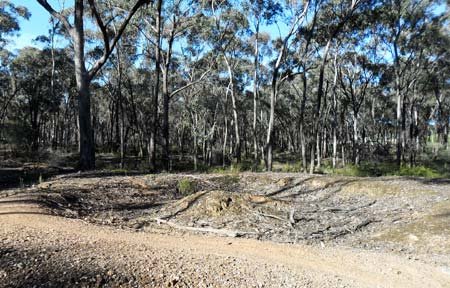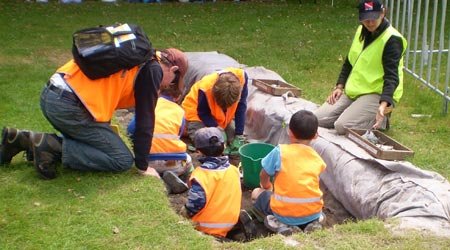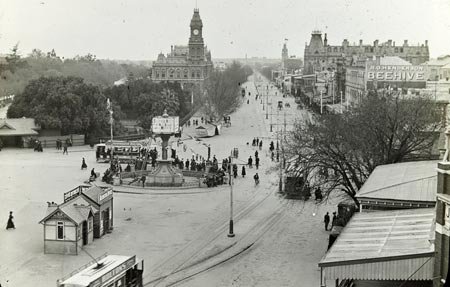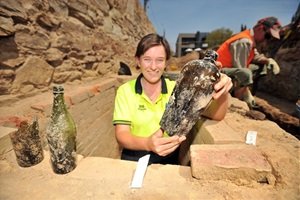By Helen Cronin, Master of Archaeology student
One of my colleagues died this afternoon. She’d sent an apology for this morning’s fortnightly meeting and said she’d probably be back next week. This afternoon we learned that Kay’s brother had found her dead. We all thought she just had the flu. Though I’m still in shock that she’s gone so unexpectedly, I realised that she’d left me a gift which resonates with the local memory theme I’ve been exploring during my Directed Study.
The gift of story
Archaeologist Cornelius Holtorf argues that storytelling, not empirical knowledge is the basis of human culture*. I moved to Bendigo in central Victoria (population 100,000) seven years ago. When I arrived I knew only that it had been a major gold mining town. For seven years I’ve been reading or listening to stories about the place – from people with strong family and professional connections to the Chinese history of Bendigo, from the mountain biking friends who showed me remnants of wooden water pipes and puddling machines out in the bush, from the bushwalkers who know all the water races and their history. After only seven years I feel a connection to the place that I never felt in Melbourne even though I grew up there.

Remains of puddling machine downstream and north-east of Jackass Flat Reservoir. This is about a half hour walk from where I live. These machines were much more efficient than hand puddling, but they needed huge amounts of water and the waste sludge was an environmental disaster. It clogged waterways and polluted water leaving inhabitants sick or thirsty. This whole landscape has literally been turned upside down.
Horse driven puddling machine in central Victoria in the 1880s. This is what the machine above would have looked like. Source: Victorian Dept of Primary Industry http://www.dpi.vic.gov.au
Story and local connections
Kay’s gift was some marvellous stories about her aunt who grew up in Bendigo in the early part of the 20th century. She knew where all the old mining camp sites were scattered around in the bush and could take her nieces and nephews on expeditions to places that are now fast disappearing under new housing estates.
Each story you hear adds to a sense of place. Each builds on the last to create a deeper experience of place. And if a newcomer like me can develop a connection through stories and knowledge of landscape, how much more so those whose relationship extends through generations – or thousands of years.
Interest is proportional to nearness in space and time
Hedley Swain suggests that people feel more excited about an archaeological find the closer they are to it in space and time. Two years ago, an commercial firm in Bendigo decided to rebuild its headquarters and an archaeological excavation was required. My directed study this semester involves assisting on an exhibition of artefacts from the dig. The site owner was sent a draft of the essay I’m working on for the exhibition catalogue and replied: “It is fascinating to think that all of the activity you write about happened on a site we now operate from.”
I’m a late comer to the study of archaeology. Though it fascinates me, I frequently question its relevance, especially when so much work only lives in unpublished technical site reports. But with the opportunity to contribute a layer to local memory here, I wonder if there isn’t some value in the discipline – especially for Aboriginal communities whose landscape of memory has been disrupted or destroyed in the last 200 years by the very activities I’ve been hearing stories about.
I agree with Holtorf – it’s in the storytelling that the real value of scholarship lies. Kay, who knew I love to listen to stories, might have agreed too.
Reference:
Holtorf 2005, cited in Hedley Swain 2007 An Introduction to Museum Archaeology, Cambridge, Cambridge University Press, p55




